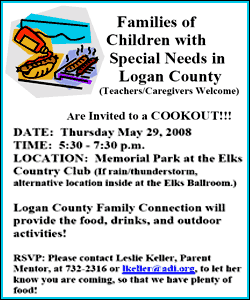|
 The world's first full-scale nuclear reactor is just one stop on a tour of the Hanford nuclear reservation. The federal government created the site in the 1940s as part of the top-secret Manhattan Project to build the atomic bomb. Today, more than two decades after it stopped producing plutonium, Hanford is the nation's most contaminated nuclear site, and cleanup is expected to continue for years. The world's first full-scale nuclear reactor is just one stop on a tour of the Hanford nuclear reservation. The federal government created the site in the 1940s as part of the top-secret Manhattan Project to build the atomic bomb. Today, more than two decades after it stopped producing plutonium, Hanford is the nation's most contaminated nuclear site, and cleanup is expected to continue for years.
Still, the sprawling land of dust and sagebrush -- about half the size of Rhode Island
-- will draw some 2,000 tourists this year.
Some seek out the history of America's radiation age. Others come to reminisce about the days they or their loved ones spent working in the desert city that sprang up overnight. And then there are those who are concerned about the government's environmental stewardship.

Tourists aren't allowed close enough to the cleanup operations to be in danger from Hanford's contaminants, largely found in the soil and water. From a distance, visitors watch workers in white protective suits bury mercury-contaminated soil in a landfill. They gawk at massive cranes brought in to build a plant that will encase radioactive waste in glass.
For people who want to see where their tax dollars go, or what environmental cleanup means, Hanford is the place to visit
-- sludge, toxic debris and all.
"We love it. We love to have people come. The American people own the site, and they ought to be able to see it," said Michele Gerber, spokeswoman for cleanup contractor Fluor Hanford Inc. and a Hanford historian.
Tourism in the nuclear industry isn't new. In 1949, the American Museum of Atomic Energy opened its doors in Oak Ridge, Tenn., guiding visitors through the peaceful uses of atomic energy. It has since been renamed the American Museum of Science and Energy.
The Atomic Testing Museum in Las Vegas traces a half-century of nuclear weapons testing, including the world's first explosion of a nuclear device, the Trinity test on July 16, 1945. In Albuquerque, N.M., the National Atomic Museum offers exhibits and educational programs about the people and events that shaped the nuclear age.

The U.S. Department of Energy, which manages Hanford, posts tour dates for the site on its Web site each spring. Visitors preregister online, and the bus tours fill up within minutes. Only U.S. citizens are permitted.
"It's the first time we've ever been able to get onto it. It's pretty difficult, but I think it's wonderful. I've always wanted to come back," said Betty Breitenfeldt, 85, of Prosser.

Breitenfeldt was hired in Iowa to come to Hanford as an office worker in June 1944, shortly after the government picked the rural land to house some of the Manhattan Project. The jobs were taken by the time she arrived.
She ended up waiting tables in one of eight mess halls built to feed the 50,000 people lured to southern Washington by jobs. Few knew they were there to build the nuclear reactor. Some joked the plant would produce toilet paper.
[to top of second column] |
 Only after the United States dropped the bomb on Hiroshima on Aug. 6, 1945, did the realization hit home. The B Reactor had produced the plutonium for the Trinity test a month earlier. It then made the plutonium for the bomb that was dropped on Nagasaki three days after Hiroshima.
Estimates vary, but at least 220,000 people are believed to have died in the bombings.
Eight more reactors were built in the ensuing years as the United States bolstered its weapons arsenal during the Cold War. Then, in 1986, the government declassified thousands of documents about radioactive releases and waste. The last reactor shut down in 1987, and the focus shifted to cleaning up the site.
Acres of contaminated debris -- such as clothing, equipment and pipes -- are buried underground. Miles of contaminated groundwater lie next to the Pacific Northwest's largest waterway, the Columbia River. Some 53 million gallons of toxic radioactive waste
-- enough to cover 123 football fields, including end zones, a foot deep -- sit stewing in 177 aging underground tanks.

Visitors' questions about Hanford belie the quirkiness of touring a nuclear waste site. The B Reactor is the showpiece of the tours, which also highlight the remnants of World War II and Cold War weapons production.
"It's interesting to see, or to think about, where our country was in the
'40s and what we had to do, versus what we've learned since about nuclear material and about the environment and to see what they're doing with it," Danielle McGurk said as she toured the site with her husband.
McGurk, 39, of Seattle, lived near Hanford as a teenager and once worked there as a video technician. Now that she has a 7-year-old son, the site has new significance for her.
"When you're here, you see how close you are to the Columbia River, and you want to make sure that's a resource that's kept clean and safe," McGurk said.
Gerber conceded that one goal of the tours is to give people an understanding of how complicated the cleanup is. The other is to ensure they appreciate Hanford's history.
"Hanford was the battleground of the Cold War, and that story has never really been told, because the Cold War has only been over for 17 years," she said. "We are on the forefront of telling that story, and it's very exciting."
___
On the Net:
http://www.hanford.gov/
[Associated
Press; By SHANNON DININNY]
Copyright 2008 The Associated
Press. All rights reserved. This material may not be published,
broadcast, rewritten or redistributed.
 |